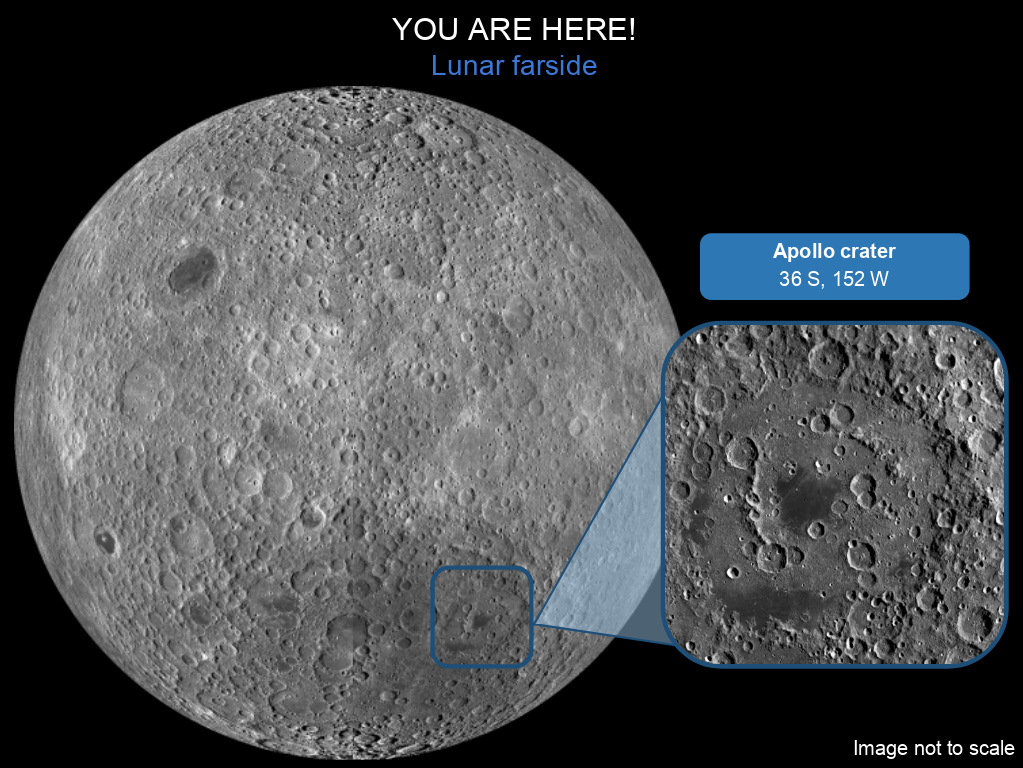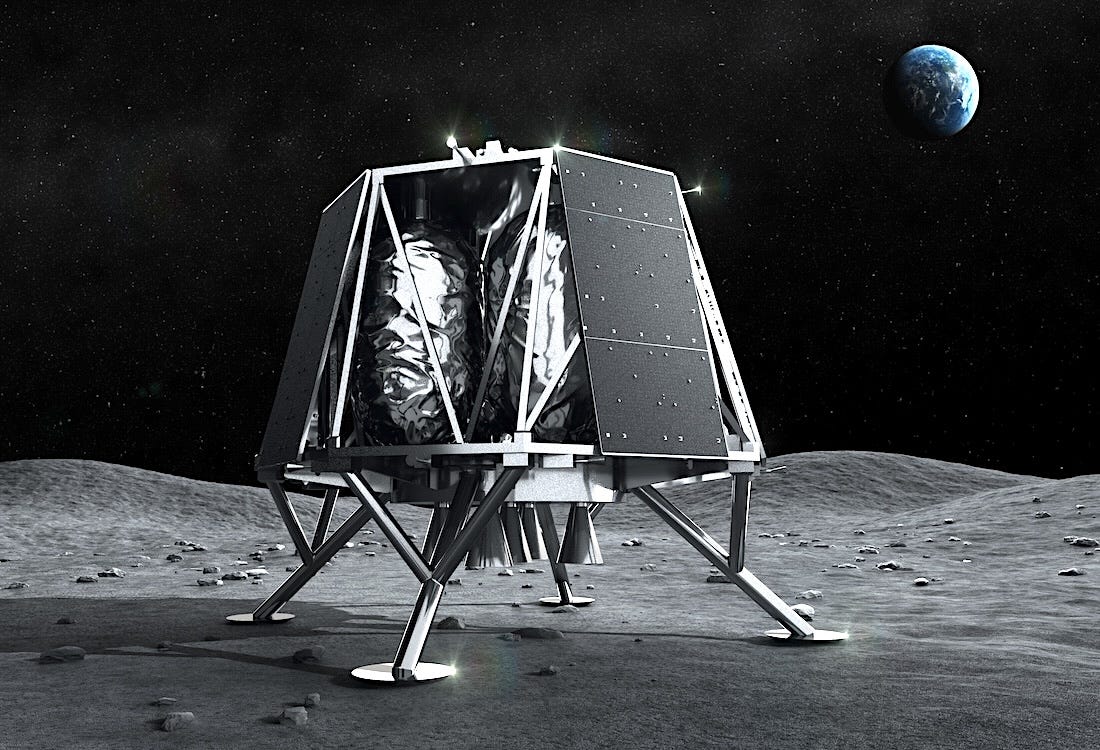Moon Monday #147: The world keeps Luna in sight as Chandrayaan 3 observes Earth from lunar orbit
Mission updates
- CNSA announced on September 29 that China will indeed launch the Chang’e 6 farside sample return spacecraft and its supporting orbiter next year.

- Following two maneuvers last month to raise the SLIM lunar lander’s Earthbound orbit, JAXA fired the spacecraft’s engines on October 1 to make it fly past the Moon—though not to insert SLIM into lunar orbit just yet. Much like the Advanced Space-led CAPSTONE and South Korea’s KPLO craft, SLIM will take a longer but highly fuel-efficient route to the Moon, only targeting lunar orbital insertion about three months from now. SLIM will then spend a month in lunar orbit before attempting its 20-minute descent and ‘pinpoint landing’.
- Over two weeks starting September 11, technicians installed all four RS-25 engines onto the core stage for the second SLS rocket, which will push four astronauts towards the Moon on NASA’s Artemis II mission circa early 2025. The propulsion and electrical systems of the core stage will be integrated by end of year, Stephen Clark reports. In the meanwhile, the 10 motor segments that will power the rocket’s twin five-segment boosters arrived at NASA’s Kennedy Space Center on September 25 by rail. Technicians will inspect and process them before stacking them early next year followed by integration with the core stage.

SHAPE observes Earth as an exoplanet
ISRO Chief S. Somanath says that the agency has completed all baseline observations from the Earth-observing SHAPE experiment aboard the Chandrayaan 3 orbiter module. SHAPE is designed to observe the full Earth disk from lunar orbit to improve our understanding of what the spectro-polarimetric signatures of distant Earth-like habitable exoplanets might look like. With such data scientists can infer (known) physical properties of Earth, and from it those of Earth-like exoplanets we discover like the strength and direction of their magnetic fields, atmospheric composition including presence of water and methane, and so on.

While more distant spacecraft than Chandrayaan 3 such as NASA’s Galileo Jovian orbiter have certainly conducted full disk Earth studies, its observations had limited phase angles. On the other hand, Earth-based observations suffer from depolarization whereas Earthbound satellites cover limited spectral range. The Moon thus offers a unique vantage point from which to study Earth as an exoplanet. SHAPE’s observations will allow scientists to study Earth-reflected sunlight over a broad spectral range at all phase angles and so in two polarization directions, thus feeding uniquely into the worldwide hunt for another Earth.
Unlike other initial scientific measurements from the Chandrayaan 3 mission though, ISRO hasn’t yet publicly shared any data samples from SHAPE. This isn’t the first instance of an Indian mission leveraging the lunar vantage point for non-lunar science; the Chandrayaan 2 orbiter is also a Sun watcher.
Many thanks to Epsilon3, The Orbital Index and Arun Raghavan for sponsoring this week’s Moon Monday.
New design and launch date for NASA’s first farside Moon lander
On September 28, ispace Japan announced a new HQ for its US subsidiary at Denver, Colorado where the company will manufacture the APEX 1.0 lander—previously called Series 2—for an upcoming NASA CLPS mission via partner Draper. APEX is larger and more capable than the compact Series 1 design from ispace Japan which flew on the company’s Mission 1 earlier this year, and will do so again next year with Mission 2.
The redesign features 300 kilograms of payload capacity instead of the original target of 500 kilograms. That’s still ten times the Series 1 lander’s capacity though, and ispace says 500 kilogram remains as a stretch goal. Jeff Foust reports that APEX was redesigned from its original Series 2 structure primarily to meet the vibrational requirements of the NASA payloads onboard. Coupled with the pending upcoming critical design review, the launch of Draper’s first Moon mission had to be delayed by a year to 2026. The lander will attempt a touchdown on the Moon’s farside, a feat achieved only by China’s Chang’e 4 spacecraft thus far. The mission’s landing region chosen by NASA is no less impressive—the 312 kilometers wide Schrödinger crater, a pristine destination long asked for by the global scientific community.

As an aside, the Mission 1 lander’s failed April 25 touchdown did prompt ispace to iteratively improve the hardware and software design of Series 1. Foust also reports that ispace mentioned a $22 million payout as insurance from Mitsui Sumitomo.
ESA wants to fund more Moon missions
On September 28, ESA formally asked the industry to propose small and medium Moon mission concepts that can fly starting 2026–2028. As long as each mission stays under €50 million, and focuses on ESA’s exploration and science goals, any physical form goes: an orbiter, a (presumably small) lander, flyby craft, a rover, what have you.
As one way to stay within budget, ESA is encouraging missions that leverage a rideshare launch on Europe’s upcoming Ariane 6 rocket. In fact, the agency says it has specifically studied several lunar-ward trajectories from Ariane 6 for such rideshare spacecraft, including getting possible aids with a kick-stage. ESA also suggests spacecraft use its upcoming Moonlight navigation and communications service to reduce the mass and cost of the hosted communications system.
Industry proposals are due by December 14, and selected mission concepts will start feasibility studies in mid-2024. Relatedly, it’s worth noting that ESA seems to have abruptly removed the page about its potential NASA-CLPS-like program of lunar landers, which I reported on in February. Hopefully, this new call for proposals has a different fate.
More Moon

- On September 26, DLR inaugurated a new 1500-square-meter Moon-Mars facility to test mobile robotic explorers on basaltic surfaces and landforms similar to those at Luna and the Red Planet. Relatedly, ESA and DLR are working together to open up the LUNA facility to test both robotic and crewed exploration activities starting next year.
- How Artemis II astronauts will live inside the Orion capsule during their Moon trip
- China is considering exploring lava tubes with robots and then humans, owing to the relatively stable temperatures, sheltering from micrometeorites, and radiation protection the geological feature offers. ESA is also considering a 2033 mission to explore a lunar pit that has an opening to a lava tube.
